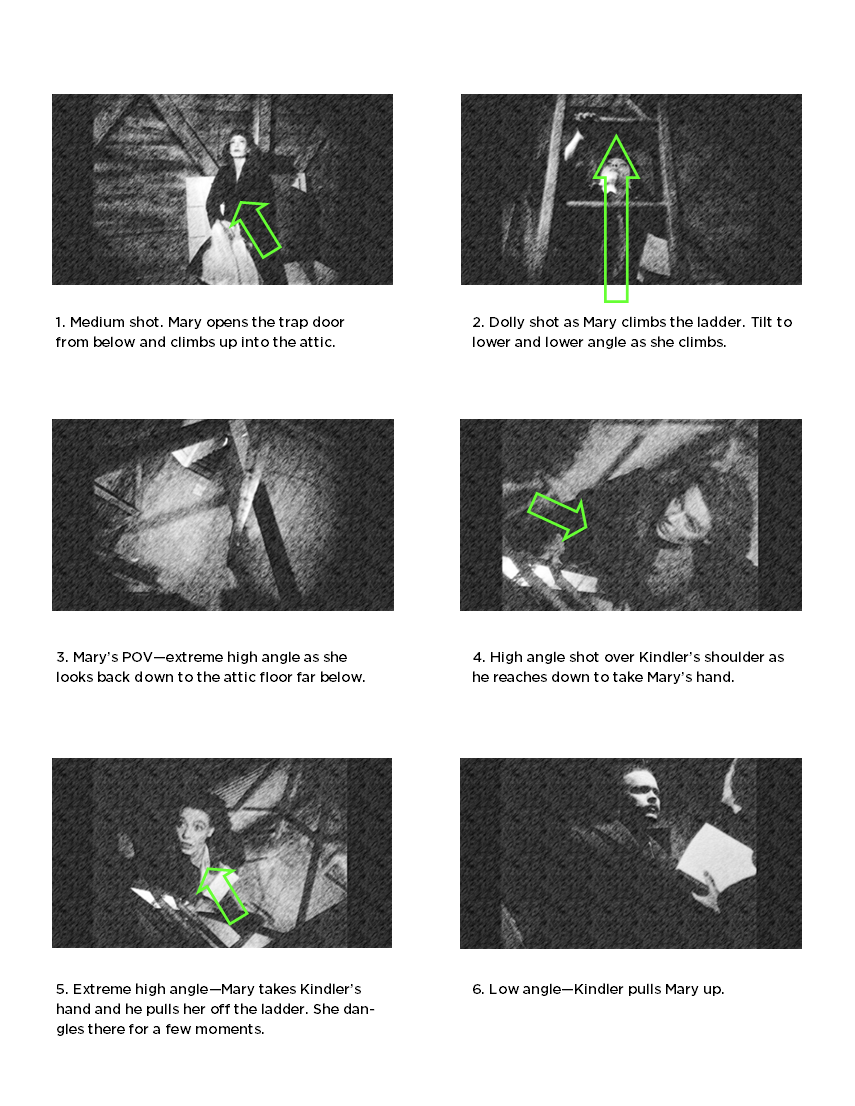Storyboards
Storyboards are how media makers plan how they will use angle, distance and movement. They are used in movies, TV shows, and video games. Directors and cinematographers work with storyboard artists to decide the most effective composition for each shot.
They often look a lot like comics (and many comics artists also work as storyboard artists) but you don’t need to be able to draw to do storyboards – stick figures are okay! Even comics artists make their own version of storyboards, called breakdowns, before they draw the final page.
Here is a storyboard of the scene you watched at the beginning of this lesson. Each one shows the angle and distance of the shot and describes what’s happening in it.
Movement within the shot is shown with an arrow inside the frame. Camera movement is shown with an arrow that stretches outside the frame to show how the camera moves during the shot. Hover over each image to learn more about what’s happening in each shot.
Here’s how the same storyboard would look on paper:

Think back to the first two times you watched this scene. What do you know now about how the film-makers showed you:
How is the relationship between the characters made clear through camera framing?
How is the made clear through camera framing?
What do the choices tell you about what kind or genre of movie it is? Its “feel” or mood?
What do the choices suggest might happen next? Why do you think so? How does camera framing create tension in the scene?
Genre is the types or categories into which texts are grouped. For example, film genres include action, suspense and comedy. There are also more specific sub-genres such as superhero, romantic comedy, thriller and film noir.
